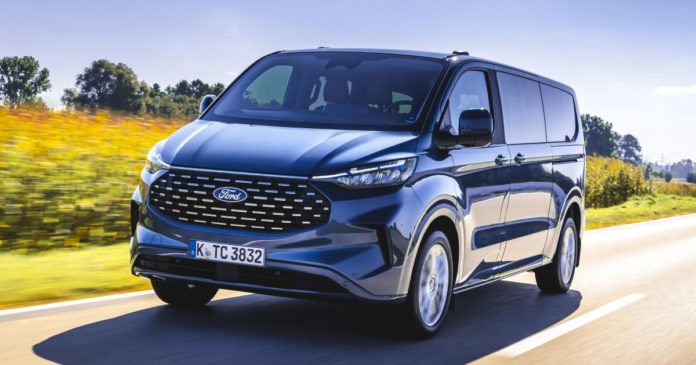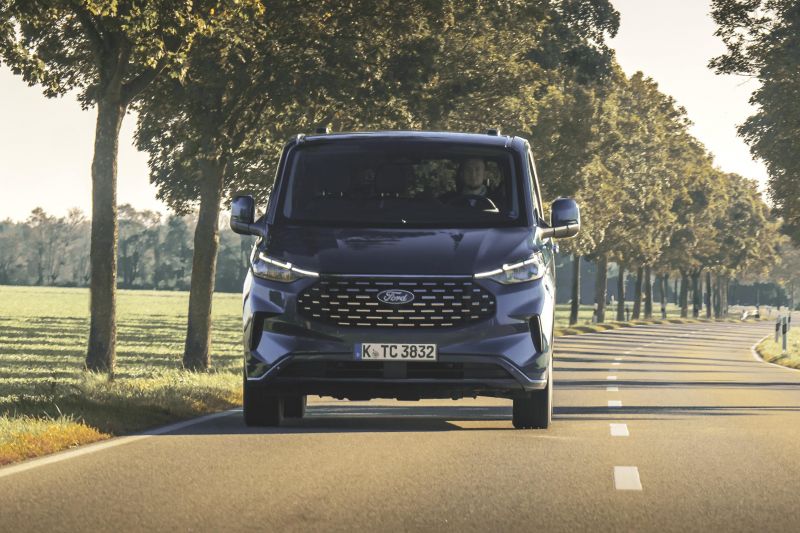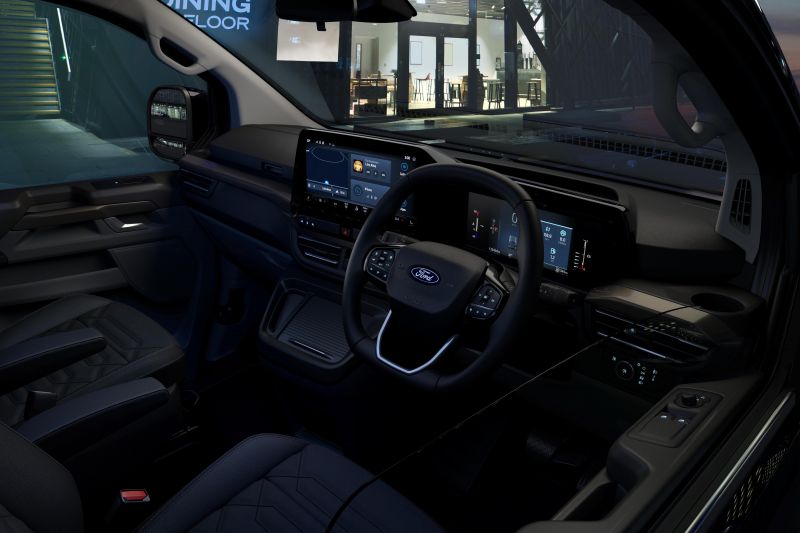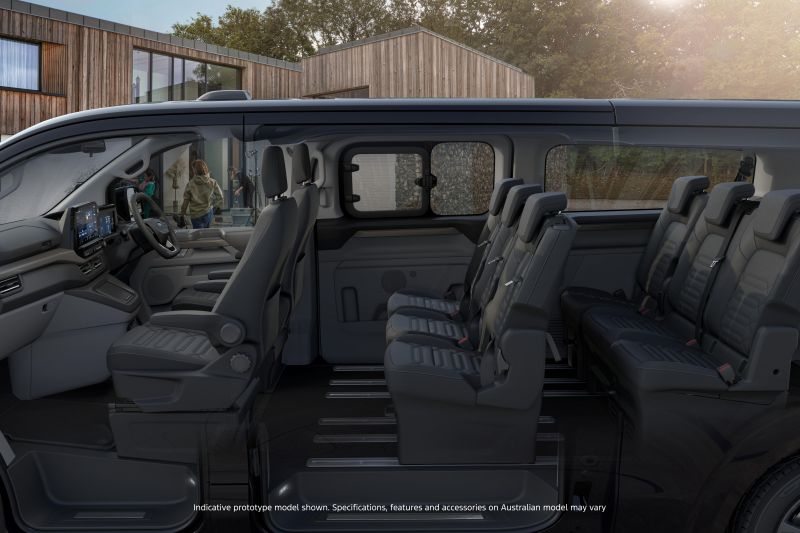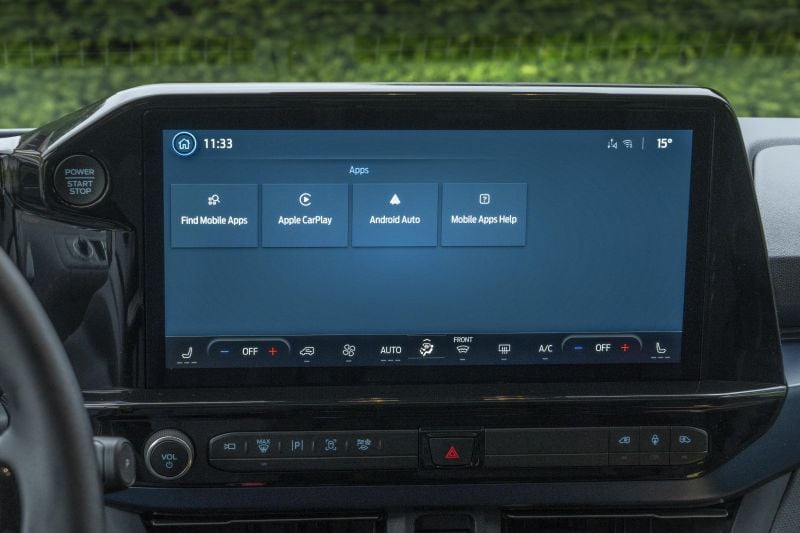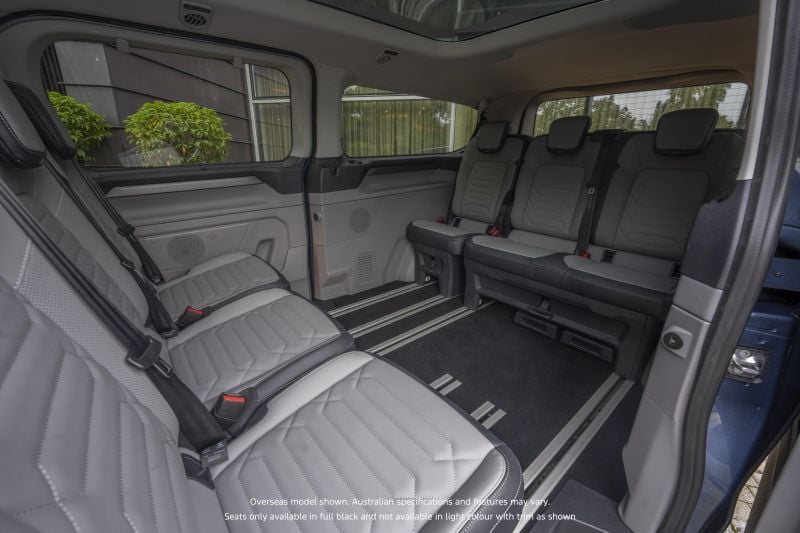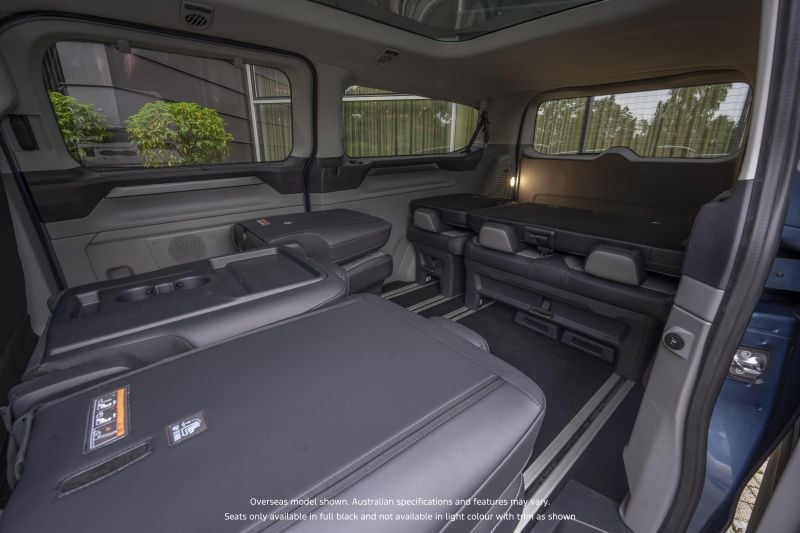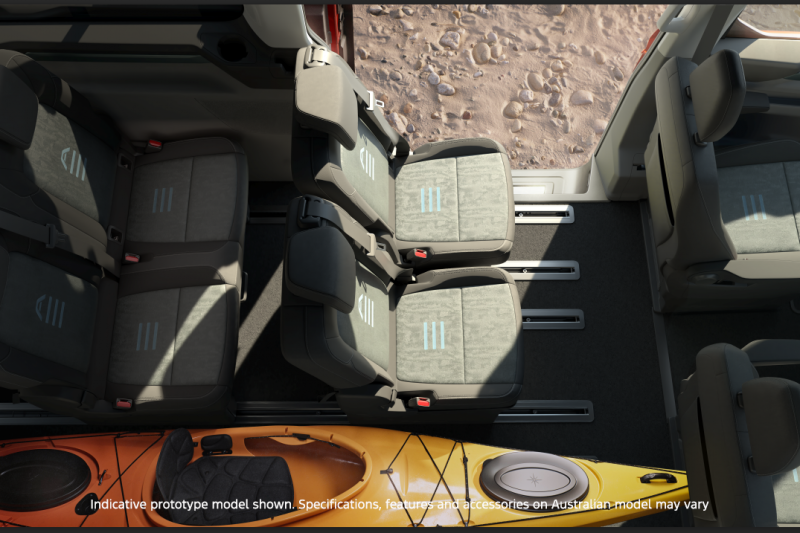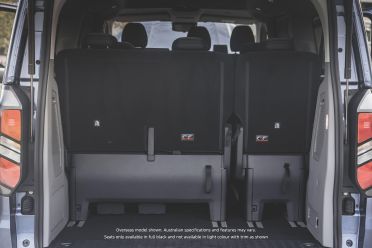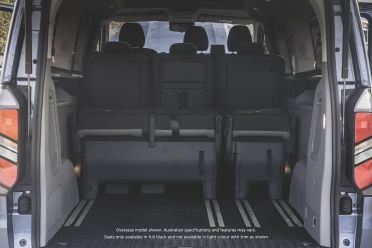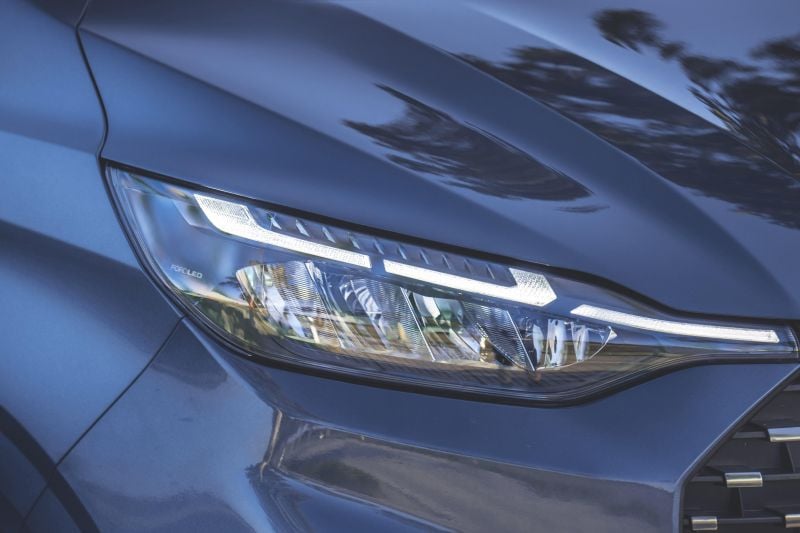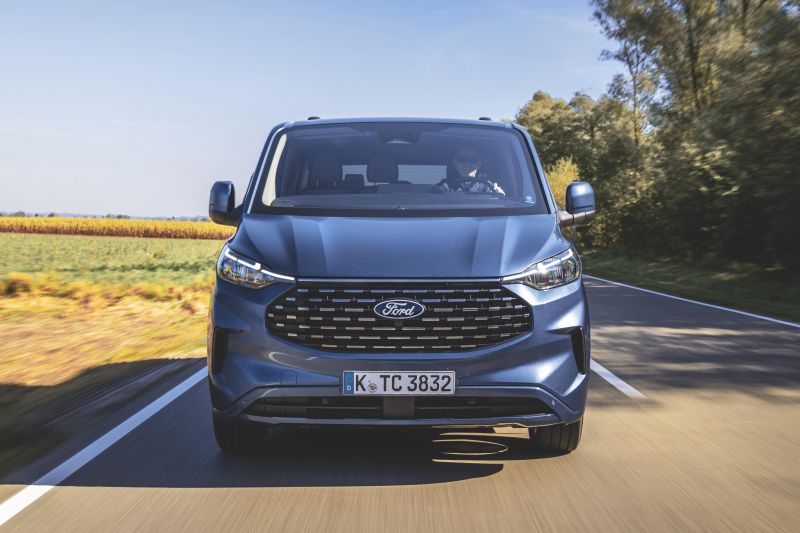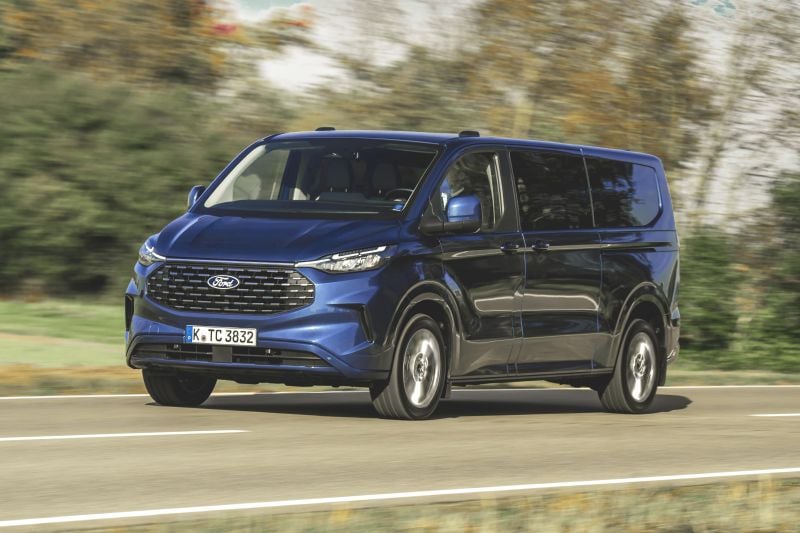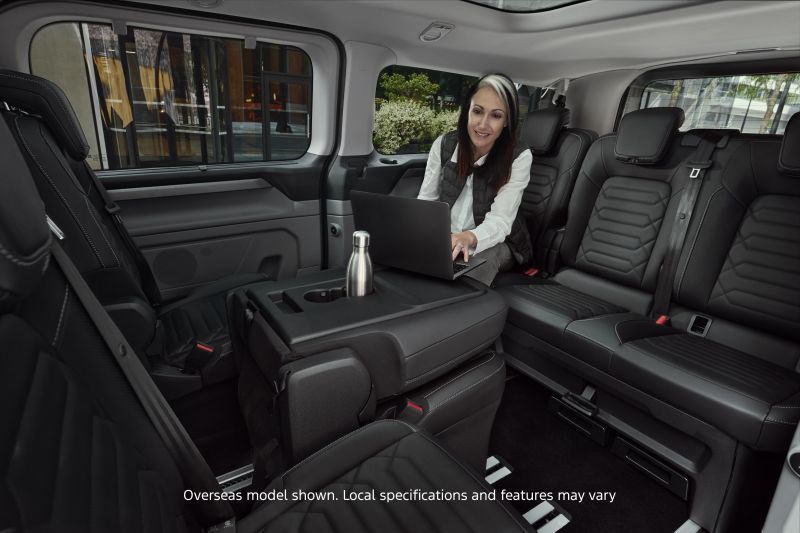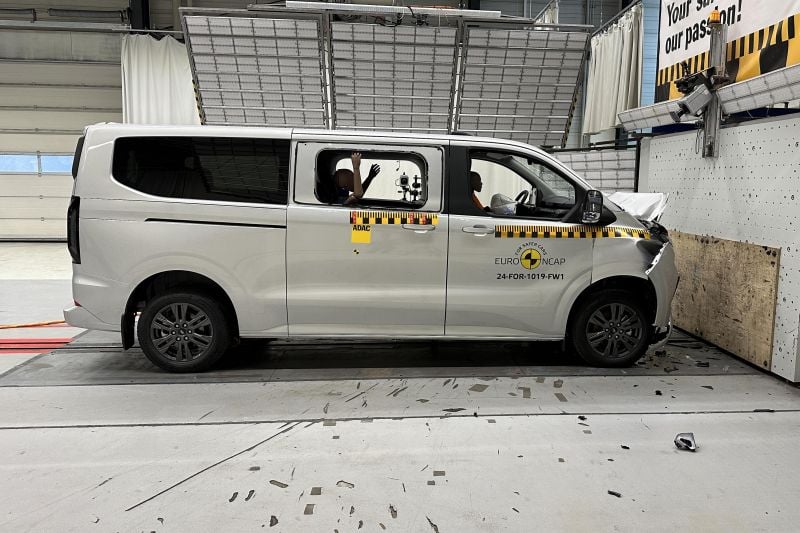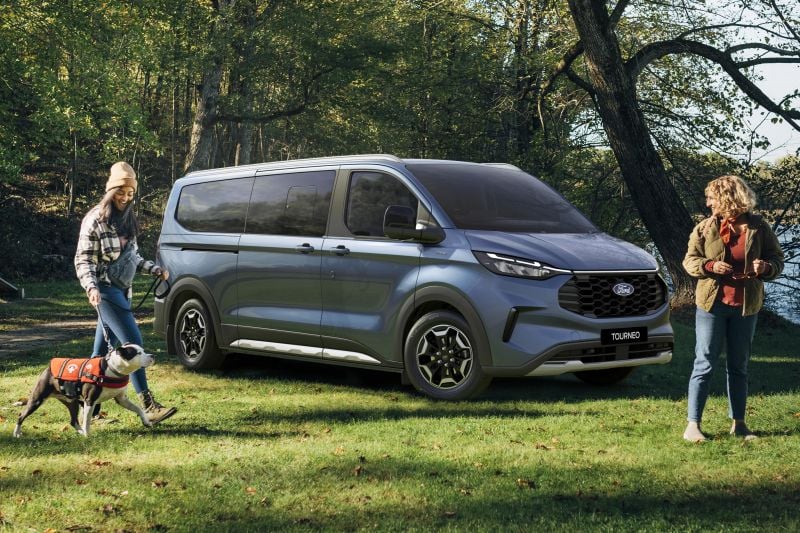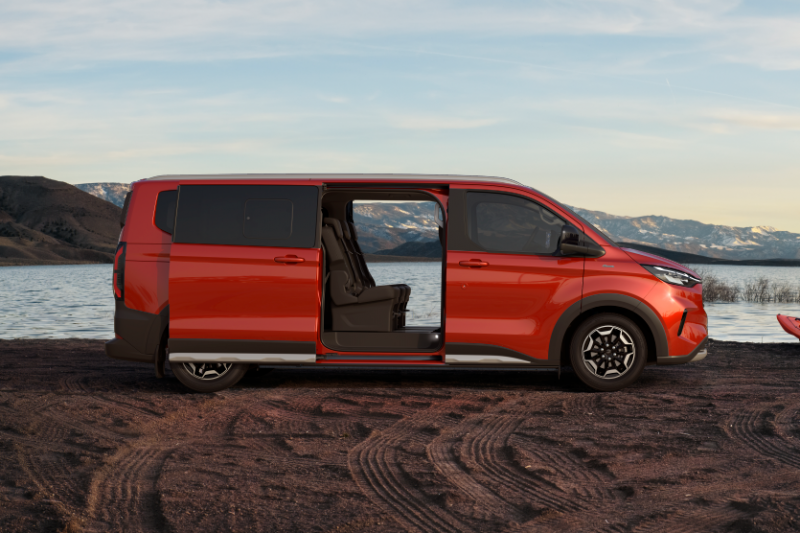Ford hasn’t sold a people mover in Australia since 1990, but now it wants to get back into the game with the Tourneo.
-
Titanium X
We never got any of Ford North America’s various people carriers, ending in the Freestar. More disappointingly, we never got any of Ford of Europe’s excellent MPVs, including the sleek S-Max and spacious Galaxy.
After Ford Australia dropped the Spectron in 1990, it simply didn’t bother with the segment.
Perhaps it’s because people movers – or MPVs or minivans, whatever you want to call them – never quite reached the heights of popularity here that they did in markets like the US and Europe. And the segment was usually sewn up by one model at a time – the Toyota Tarago in the 1990s, the Honda Odyssey and Kia Carnival thereafter.
Australian buyers continue to buy SUVs in droves, and Europe is increasingly embracing them too.
That has seen the once booming people mover segment in Europe rapidly evolve, with car-based people movers disappearing in favour of either new SUVs (see the Renault Espace’s transition from MPV to SUV) or van-based people movers.
Known as the Tourneo Custom in Europe, the new van is part of a full line of van-based people movers offered on the continent – this also includes the smaller Tourneo Courier and Tourneo Connect.
Like that old Mazda Bongo-based Spectron, the Tourneo is heavily based on a van – in this case, the Transit Custom. But that’s where the similarities between these two Ford people movers end.
Vans have evolved considerably over the past few decades, with more safety technology and refinement. That means van-based people movers have come along for the ride.
How does the Ford Tourneo compare?
View a detailed breakdown of the Ford Tourneo against similarly sized vehicles.

Ford
Tourneo
How much does the Ford Tourneo cost?
The Tourneo range in Australia is simple.
There are just two variants, both of which use the shorter of the two wheelbase options and come standard with front-wheel drive. Ford is, however, weighing a single-motor rear-wheel drive electric version.
| Model Variant | Price before on-road costs |
|---|---|
| Ford Tourneo Active | $65,990 |
| Ford Tourneo Titanium X | $70,990 |
For context, the Kia Carnival range is priced between $50,150 before on-roads for the base S V6, topping out at $76,210 before on-roads for the GT-Line Hybrid.
That sees the Tourneo Active slot in between the upper-mid-range Sport+ and GT-Line Lite diesels ($64,610 and $68,580), with the Tourneo Titanium X sitting just below the GT-Line diesel ($72,910).
Would it be better to compare the Tourneo against other van-based people movers? Maybe so, but the Carnival to the end of May is sitting at just over 70 per cent of total people mover sales in Australia.
What is the Ford Tourneo like on the inside?
While the Tourneos we drove had a nine-seat configuration, with three seating positions in every row, Australian-market models will feature only two seats up front allowing for walk-through access to the rear.
Nine-seat models have the same dashboard as the Transit Custom, but eight-seat models are somewhat different.
The centre stack juts out more, which means it isn’t quite as easy to slide across the front seats – you’ll want to watch your knees if you’re particularly tall and gangly.
There’s a roll-top compartment concealing two cupholders, which means one more place to put a drink, as nine-seat models have only a single cupholder in the middle which pops out.
All Tourneos, regardless of configuration, have a cupholder on either end of the dashboard.
The wireless charging pad is also repositioned slightly on the centre stack, though it’s still difficult to see whether your phone is charging.
Apart from the different centre stack in eight-seat models, the dashboard is otherwise pure Transit Custom. That means hard (if hard-wearing) plastic trim, though the subtle two-tone treatment of our tester improved the ambience.
The close relation to the Transit Custom also means the Tourneo has the same gear selector, which is mounted on the column and helpfully frees up some space, but is all too easy to mistake for the almost identically shaped indicator/wiper stalk…
There’s a 7.0-inch digital instrument cluster and a 13-inch touchscreen running the SYNC 4 infotainment system, and both displays are well-positioned for the driver and boast neat, modern graphics.
The menu structure is logical and there are physical shortcut buttons for key menus under the screen, while the satellite navigation is easy to use and there’s wireless connectivity for both Apple CarPlay and Android Auto.
The Tourneo supports over-the-air updates, and there’s an embedded 5G modem.
There are dual glove compartments, as Ford has freed up space for a second one by moving the passenger airbag to the roof. There’s more storage atop the dashboard, as well as cavernous bottle holders in the doors.
It all sounds rather functional, doesn’t it? Well it certainly looks functional, too, with style clearly not a priority.
There are lashings of gloss black trim, including around the screen and centre stack, in an attempt to improve the ambience. Vaguely metal-like trim also runs across the dash for contrast, but this is fundamentally a van interior.
Where the Tourneo truly impresses is behind the first row.
Open the sliding doors and the first thing you’ll notice are the sliding seat tracks. These allow you to easily slide the second and third rows, and also position the second row to face rearward.
When we weren’t driving the Tourneo in Germany, we were being shuttled in them and six adults could sit back here in comfort.
It’s all very flexible – for example, you can fold the centre second-row seat to make a table, and slide it into the middle of the cabin; this also allows front-row occupants to easily access the rear of the Tourneo.
Almost every seat in the rear (two of the third-row seats are conjoined) can be individually adjusted, so if you want to free up a little shoulder room you can slide the seat you’re in forward or backwards. Fortunately, all seats are comfortable, so you’re not sacrificing comfort for functionality.
Removing a seat is easy: pull a strap to fold it, pull another strap to lift it out of the tracks, and unplug the heated seat cable. They’re a bit heavy for some people, so bend with your knees, but it’s all pretty idiot-proof.
The enormous fixed glass roof, which will be standard on the top-spec Titanium X in Australia, is an absolute delight. Your kids might even put down their tablets to stare up through it.
There’s no shade, though it is tinted. We did notice the cabin get a bit hot on a very mild day in Frankfurt with the air-conditioning off, which does make us wonder how much you’ll have to pump up the A/C to keep the cabin cool during a hot Australian summer.
Models with tri-zone climate control have a control panel above the second row that’s easy to use. There are two USB-C outlets on either side of the cabin, situated just next to the sliding doors.
Unusually, there are no grab handles back here.
We’re sadly not getting the rather modern-looking grey interior in Australia, with all local-spec Tourneos to instead have black upholstery that’s perhaps a bit more kid-friendly.
Ford says it’s aiming the Tourneo at private buyers, but we would warn parents that those sliding seat tracks are almost certainly going to become encrusted with filth. You know how dirty kids can be! Keep your crevice tool handy.
There’s no difference in interior space apart from a 30cm shorter cargo bay, which can still accommodate a pair of suitcases even with the third row as far back as possible.
You can still comfortably accommodate a full complement of passengers and a decent amount of luggage with some sliding.
The pivoting down lights in the tailgate are a clever touch.
| Dimensions | Ford Tourneo |
|---|---|
| Luggage space – behind first row of seats to roof, VDA | 4683L |
| Luggage space – behind second row of seats to roof, VDA | 2102-2408L |
| Luggage space – behind third row of seats to roof, VDA | 672-1045L |
For reference, Kia quotes VDA measurements of 627L (all seats up) and 2827L (third row folded).
What’s under the bonnet?
Just one engine will be available at launch in Australia.
| Tech Specs | Ford Tourneo |
|---|---|
| Engine | 2.0L 4cyl turbo-diesel |
| Power | 125kW |
| Torque | 390Nm |
| Drive type | Front-wheel drive |
| Transmission | 8-speed automatic |
| Braked towing capacity | 2500kg |
Ford Australia has yet to confirm local fuel economy figures, but the related Transit Custom with the same engine uses 8.0L/100km on the combined cycle.
While it’s down on power and torque compared to the Carnival diesel, which has 148kW and 440Nm, it trumps it in braked towing capacity (2500kg v 2000kg).
How does the Ford Tourneo drive?
The Tourneo drives like a van, but at least it’s a mostly pleasant van.
We drove only long-wheelbase versions of the Tourneo, but with the more powerful 125kW turbo-diesel engine that will be offered here.
There seems to be little difference in sound deadening from the Transit Custom, so you do hear a fair amount of wind noise over the huge exterior mirrors at highway speeds, while a rattly diesel engine note is omnipresent.
We’d like to see (or hear?) some more sound deadening used in the Tourneo, at least up front. Sitting in the rear, we could carry on a conversation without having to shout.
Ride comfort is mostly good, though the caveat here is that we were driving on German roads which are traditionally of a much higher standard than the donkey tracks many Australians have to drive on.
It can feel a bit fidgety, but during our drive we found we were more likely to hear a bump than really feel the car upset by it.
The use of independent rear suspension has no doubt helped improve ride comfort compared with the previous-generation model not sold in Australia.
We took the Tourneo through some small towns and suburbs, and it didn’t feel like a chore driving this big bus around thanks to the light steering.
Unfortunately, steering weight doesn’t really build up in corners, so coupled with a typically van-like helping of body roll this isn’t the most confidence-inspiring vehicle on a winding road.
It’s a lovely steering wheel though, with thick leatherette wrapping and a flat bottom. It’s easy to park this big bus too as, in addition to the light steering, there are high-resolution cameras.
Performance is adequate. There’s a decent amount of grunt off the line, but it never feels particularly powerful, and that’s just with one person aboard. We’d like to see what it’s like with a whole family on board and their stuff.
The eight-speed 8F57 automatic transmission, also used in Fords such as the Explorer, isn’t the smoothest-shifting unit. Shifts can be pronounced, while we did notice on a couple of occasions a bit of a clunk when slowing down.
Across a couple of 30-35km drive loops, consisting of suburban and highway driving, we averaged between 10.7L/100km and 11.5L/100km – that was with just one person on board, too.
What do you get?
There are two members of the Australian Tourneo range.
-
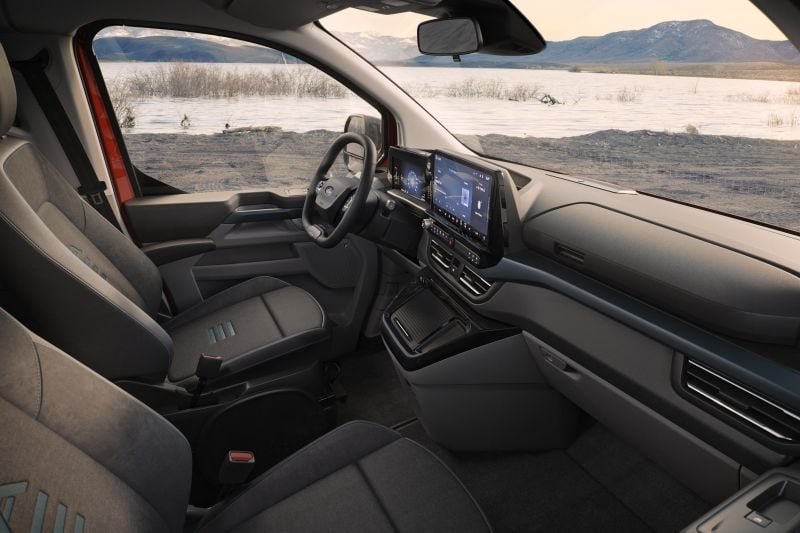
Active (overseas model shown)
Tourneo Active standard equipment:
- 17-inch alloy wheels
- LED headlights
- LED daytime running lights
- LED tail lights
- Power front windows
- Heated front seats
- ‘Track-based’ second- and third-row seats
- Tri-zone climate control
- 8.0-inch digital instrument cluster
- 13-inch touchscreen infotainment system
- Apple CarPlay, Android Auto – wireless, wired
- Satellite navigation
- 5G embedded modem
- Wireless phone charger
- FordPass app connectivity
Tourneo Titanium X adds:
- Premium 17-inch alloy wheels
- Panoramic glass roof
- Sensico artificial black leather trim
- Power-adjustable front seats
- Bang and Olufsen sound system
- 360-degree camera
19-inch wheels are a $1000 option on the Titanium X.
Is the Ford Tourneo safe?
The Ford Tourneo has yet to be assessed, however sister authority Euro NCAP has given it three- and four-star ratings depending on whether a safety pack is equipped.
Given all models in Australia come equipped with the features of the safety pack, it appears more likely ANCAP will award the higher of the two ratings.
The four-star Euro NCAP rating includes an adult occupant protection rating of 75 per cent, a child occupant protection rating of 86 per cent, a vulnerable road user protection rating of 83 per cent, and a safety assist rating of 62 per cent.
Standard safety equipment in Australia includes:
- 6 airbags – front, front-side, curtain
- AEB with intersection assist
- Reverse AEB
- Adaptive cruise control
- Lane keep assist
- Blind-spot assist
- Rear cross-traffic alert
- Safe exit warning
- Reversing camera with 180-degree view
How much does the Ford Tourneo cost to run?
All Fords sold in Australia are backed by a five-year, unlimited-kilometre warranty and include capped-price servicing.
Maintenance is required every 12 months or 30,000km. That’s a longer distance interval than some rivals, like the Carnival, which require servicing every 12 months or 15,000km.
Over five years, the Tourneo will cost $3695 to service, while a Carnival will cost $2851.
| Service | Cost |
|---|---|
| 1 year/30,000km | $575 |
| 2 years/60,000km | $915 |
| 3 years/90,000km | $715 |
| 4 years/120,000km | $915 |
| 5 years/150,000km | $575 |
CarExpert’s Take on the Ford Tourneo
Ford Australia has had trouble finding buyers for its thoroughly competitive small and mid-sized crossovers, which occupy two of Australia’s highest-volume segments.
We seriously wonder how successful it will be getting buyers into showrooms for a people mover, considering it hasn’t sold one since before I was born. The Kia Carnival also has this segment sewn up, with everyone else more or less fighting for the scraps.
There’s really no vehicle type more maligned by Australian buyers than people movers. It’s an uphill battle trying to convince Aussies to buy them, unless they have a large family and they effectively don’t have a choice.
That means carmakers really need to bring their A-game. The Tourneo’s standout features are its sliding and reconfigurable second and third row, as well as that enormous glass roof. It also has, as we’ve come to expect from Ford, thoroughly modern in-car tech.
Against a VW Multivan or a Mercedes-Benz Vito Tourer, the Tourneo stacks up extremely well. But neither of those models are the big fish in this segment. That’s the Kia Carnival.
The Tourneo may have an edge in outright space and versatility, but it’s neither as nice inside nor as nice to drive as a Carnival. With its clever interior layout, however, it offers a reason for buyers to jump ship from the Kia.
Click the images for the full gallery
MORE: Everything Ford Tourneo

